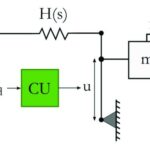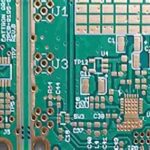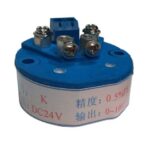What is Rogers Material PCB?
Rogers Material PCB is a high-performance printed circuit board (PCB) that utilizes Rogers Corporation’s advanced dielectric materials. These materials are known for their excellent electrical properties, such as low dielectric loss, high thermal conductivity, and stable performance over a wide range of frequencies and temperatures. Rogers PCBs are widely used in high-frequency applications, including telecommunications, aerospace, defense, and automotive industries.
Advantages of Rogers Material PCB
- Low Dielectric Loss: Rogers materials have low dissipation factors, which minimizes signal loss and ensures high signal integrity.
- High Thermal Conductivity: The materials used in Rogers PCBs efficiently dissipate heat, preventing thermal damage to components and improving overall reliability.
- Stable Performance: Rogers materials maintain their electrical properties over a wide range of frequencies and temperatures, ensuring consistent performance in demanding environments.
- Improved Signal Integrity: The low dielectric constant and low loss tangent of Rogers materials reduce signal distortion and attenuation, resulting in improved signal integrity.
Popular Rogers Material Product Series
Rogers Corporation offers several product series that cater to various applications and requirements. Some of the most popular Rogers material product series include:
RO4000 Series
The RO4000 series is a glass-reinforced hydrocarbon and ceramics laminate material that offers excellent electrical and mechanical properties. It is widely used in high-frequency applications, such as wireless communication, radar systems, and satellite communications.
| Property | RO4003C | RO4350B | RO4360G2 |
|---|---|---|---|
| Dielectric Constant (1-10 GHz) | 3.55 | 3.48 | 6.15 |
| Dissipation Factor (1-10 GHz) | 0.0027 | 0.0037 | 0.0038 |
| Thermal Conductivity (W/m/K) | 0.71 | 0.62 | 0.80 |
RT/duroid Series
The RT/duroid series is a PTFE (polytetrafluoroethylene) based laminate material that offers excellent dielectric properties and low loss tangent. It is suitable for high-frequency and high-speed digital applications, such as microwave and millimeter-wave circuits, and high-speed digital designs.
| Property | RT/duroid 5870 | RT/duroid 5880 | RT/duroid 6002 |
|---|---|---|---|
| Dielectric Constant (10 GHz) | 2.33 | 2.20 | 2.94 |
| Dissipation Factor (10 GHz) | 0.0012 | 0.0009 | 0.0012 |
| Thermal Conductivity (W/m/K) | 0.22 | 0.20 | 0.50 |
RAYPCB’s Expertise in Rogers Material PCB Fabrication
RAYPCB is a leading PCB manufacturer that specializes in the fabrication of high-quality Rogers material PCBs. With years of experience and state-of-the-art manufacturing facilities, RAYPCB offers a wide range of Rogers PCB solutions to meet the diverse needs of customers across various industries.
Advanced Manufacturing Capabilities
RAYPCB invests in advanced manufacturing technologies and equipment to ensure the highest quality and precision in Rogers PCB fabrication. Some of the key capabilities include:
- High-precision Multilayer PCB Fabrication
- Controlled impedance matching
- Fine-line and high-density interconnect (HDI) technology
- Advanced surface finishes (ENIG, ENEPIG, Immersion Tin, etc.)
- Automated optical inspection (AOI) and electrical testing
Strict Quality Control and Testing
To ensure the reliability and performance of Rogers PCBs, RAYPCB implements strict quality control measures throughout the manufacturing process. This includes:
- Incoming material inspection and verification
- In-process quality checks
- Final inspection and testing
- Compliance with industry standards (IPC, RoHS, REACH, etc.)
Customer Support and Customization
RAYPCB understands that every customer has unique requirements and specifications. The company offers personalized customer support and works closely with customers to develop custom Rogers PCB solutions that meet their specific needs. RAYPCB’s experienced engineering team provides design assistance, material selection guidance, and technical support to ensure the best possible outcomes for customers.

Applications of Rogers Material PCB
Rogers material PCBs find applications in various industries and sectors due to their superior electrical and mechanical properties. Some of the common applications include:
Telecommunications
Rogers PCBs are extensively used in telecommunications equipment, such as:
- Wireless base stations
- Antennas and antenna arrays
- Satellite communication systems
- 5G infrastructure
Aerospace and Defense
The aerospace and defense industries rely on Rogers PCBs for their high-reliability and high-performance requirements, including:
- Radar systems
- Avionics
- Missile guidance systems
- Electronic warfare equipment
Automotive
Rogers PCBs are increasingly used in automotive applications, particularly in advanced driver assistance systems (ADAS) and autonomous vehicles, such as:
- Radar sensors
- Vehicle-to-vehicle (V2V) communication
- Vehicle-to-infrastructure (V2I) communication
- Millimeter-wave radar systems
Medical
Medical devices and equipment also benefit from the use of Rogers PCBs, which offer high signal integrity and reliability. Applications include:
- Medical imaging systems (MRI, CT, ultrasound)
- Wireless patient monitoring devices
- Implantable medical devices
- High-frequency surgical equipment
Designing with Rogers Material PCB
When designing with Rogers material PCBs, there are several factors to consider to ensure optimal performance and manufacturability. Some key design considerations include:
- Material Selection: Choose the appropriate Rogers material based on the application’s frequency range, dielectric constant, and loss requirements.
- Controlled Impedance: Design controlled impedance transmission lines to maintain signal integrity and minimize reflections.
- Thermal Management: Consider the thermal conductivity of the Rogers material and incorporate appropriate heat dissipation techniques to prevent thermal damage to components.
- Manufacturing Constraints: Work closely with the PCB manufacturer to understand their capabilities and limitations, such as minimum feature sizes, layer counts, and surface finishes.
RAYPCB’s experienced engineering team can provide valuable guidance and support throughout the design process to ensure the best possible outcomes for customers.
Frequently Asked Questions (FAQ)
- Q: What are the main differences between Rogers PCBs and traditional FR-4 PCBs?
A: Rogers PCBs offer superior electrical properties compared to FR-4 PCBs, including lower dielectric loss, higher thermal conductivity, and more stable performance over a wide range of frequencies and temperatures. These properties make Rogers PCBs ideal for high-frequency and high-performance applications. - Q: Can Rogers PCBs be manufactured with the same processes as FR-4 PCBs?
A: While some manufacturing processes are similar, Rogers PCBs require specialized expertise and equipment due to the unique properties of the materials used. RAYPCB has the necessary experience and capabilities to manufacture high-quality Rogers PCBs. - Q: What are the typical lead times for Rogers PCB fabrication?
A: Lead times for Rogers PCB fabrication can vary depending on the complexity of the design, the specific Rogers material used, and the manufacturing requirements. RAYPCB strives to provide competitive lead times while maintaining the highest quality standards. Contact RAYPCB for a more accurate estimate based on your specific project requirements. - Q: Are Rogers PCBs suitable for high-volume production?
A: Yes, Rogers PCBs can be manufactured in high volumes, provided that the design is optimized for manufacturability and the PCB manufacturer has the necessary capacity and capabilities. RAYPCB has experience in high-volume production of Rogers PCBs and can scale up production to meet customer demands. - Q: How can I get started with designing a Rogers PCB for my application?
A: To get started with designing a Rogers PCB, first determine the specific requirements and constraints of your application, such as frequency range, signal integrity, and thermal management needs. Then, select the appropriate Rogers material and work with an experienced PCB design team or consult with RAYPCB’s engineering team for guidance and support throughout the design and manufacturing process.
Conclusion
Rogers material PCBs offer unmatched electrical and mechanical properties, making them an ideal choice for high-frequency and high-performance applications across various industries. RAYPCB, with its extensive experience and advanced manufacturing capabilities, is well-positioned to provide high-quality Rogers PCB solutions to customers worldwide.
By understanding the unique properties of Rogers materials, considering key design factors, and partnering with a reliable PCB manufacturer like RAYPCB, engineers and product designers can unlock the full potential of Rogers PCBs in their applications, achieving superior performance, reliability, and innovation.









